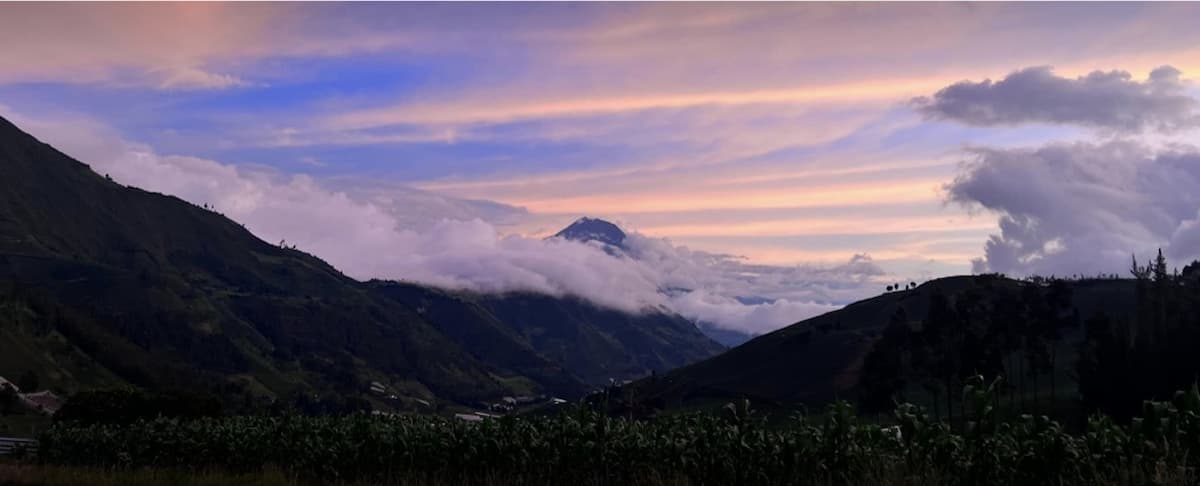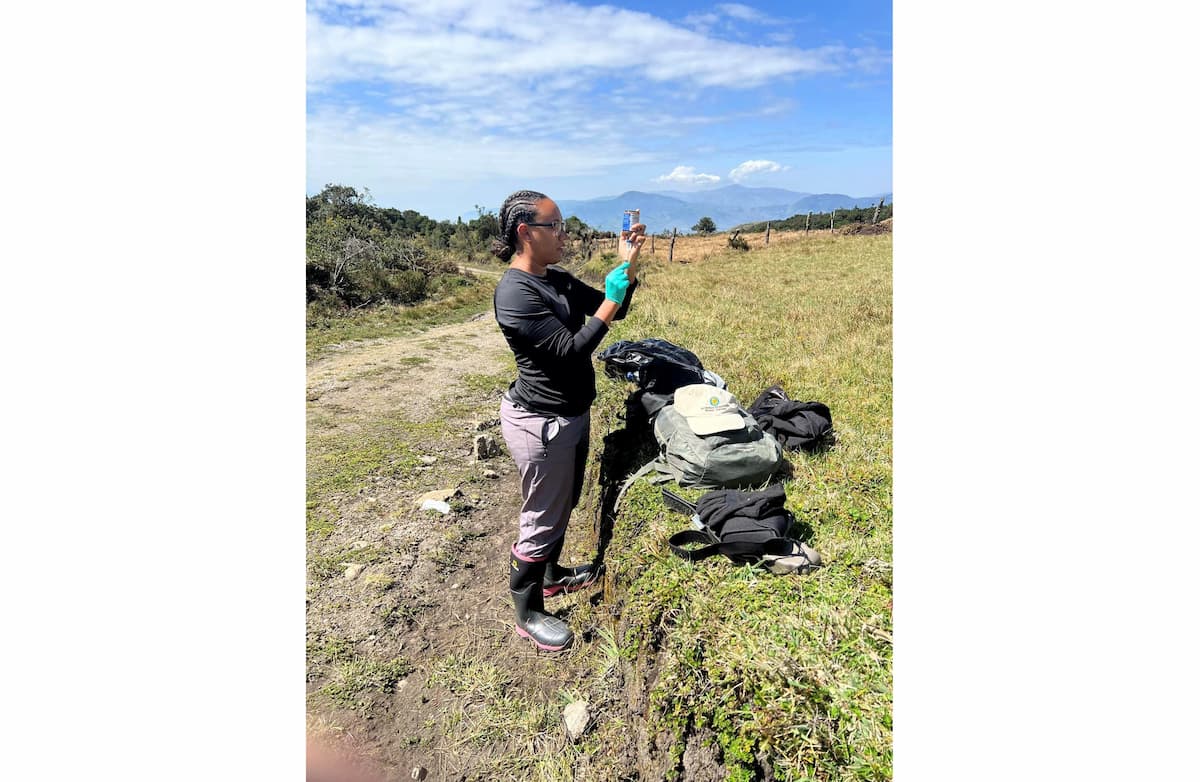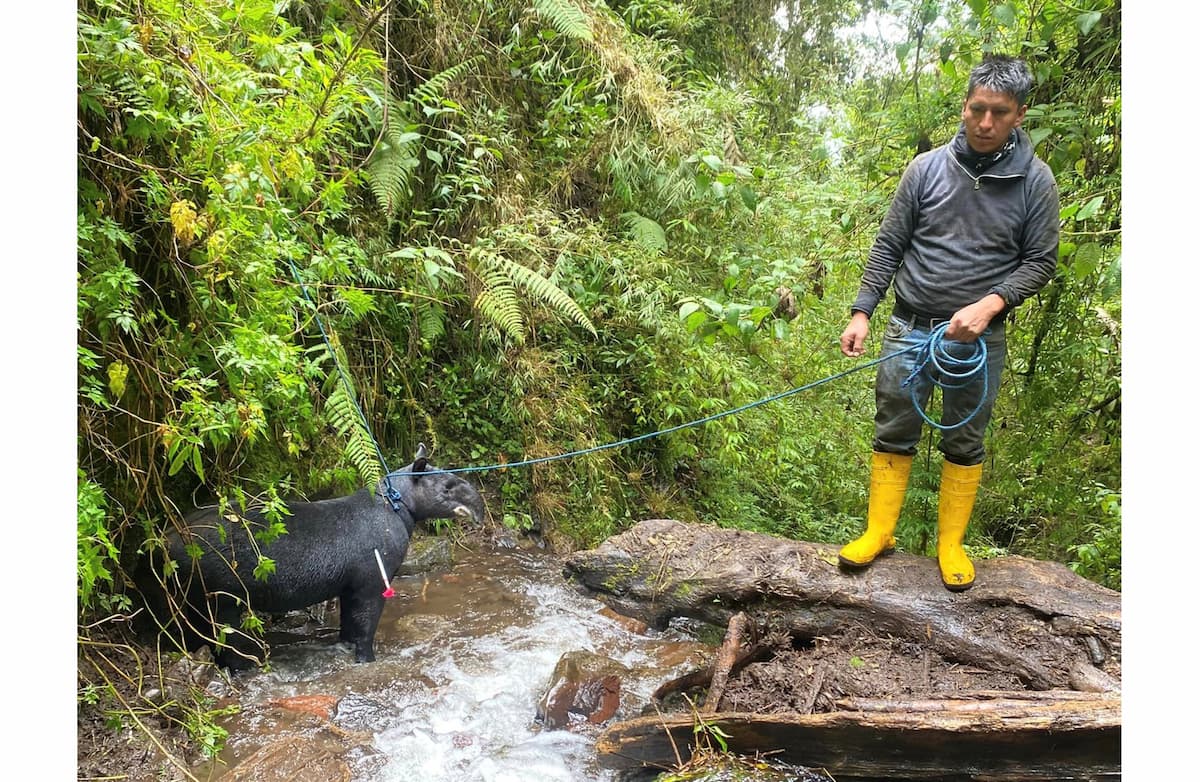By Autumn Hilden

“I love mountain tapirs, and so being able to work with them, it’s just truly a gift. I know, that doesn’t sound super deep, but that’s really, truly how I feel,” says Dr. Jordan Davis-Powell, the Zoo’s associate veterinarian. She and colleagues from Cheyenne Mountain Zoo and the Smithsonian Zoo traveled to Ecuador’s Llanganates National Park in October 2022 with the goal of studying how tapirs use their native environment, what health challenges are similar to and different from those of tapirs in human care, and the relationship between local citizens and the animals—all important objectives for conservation planning. The mountain tapir is the largest native land mammal in South America, and it is critically endangered.
That’s why Dr. Davis-Powell, who is quickly becoming known for her work with the animal, traveled by foot around the untouched, unmapped, and river-laced Llanganates. “You’re on top of the world,” she says of the landscape. “It’s like you’re literally in the clouds. You’re just on top of green mountains, very lush. And this area had volcanoes. Every day, the sunsets, the sunrises—it’s just—it’s gorgeous. Sometimes you just need to sit there and think about life and meditate, because you’re in this beautiful place. But then it’s like, ‘Okay, we got something, we gotta go,’ so you’re going from zero to 100.”

Dr. Davis-Powell had help from a conservation team that included an ex-poacher who excels at tracking and several dogs who sniff out tapirs in the thick forest. “Some of the areas can be very wet and dense to walk into. There’s waterfalls,” she explains. “So you wear really high rubber boots, which can be hard for hiking. And then the terrain can change, or the weather can change hot to cold. So you’re layering up, then you’re taking layers off, then layering back up. It changes constantly.” What does Dr. Davis-Powell think about when she’s tracking a mountain tapir? “I think about how I could have trained better or how I can’t be the last one, but I am the last one but it’s okay.” She laughs, but hiking at 15,000 feet while carrying medical equipment is serious work.


Finding the mountain tapirs, though, is worth the effort. Once the team locates a tapir, they perform a rapid physical exam. “Then it’s like all hands on deck. You’re focused on getting your meds together to get him sedated, making sure everybody’s safe, making sure the tapir is safe.” Working repeatedly with mountain tapirs at the L.A. Zoo has helped Dr. Davis-Powell refine procedures and expedite exams in the wild. “You’re there and then you’re gone,” she says. “You’re like, ‘wow, we did it,’ and that’s super emotional sometimes.”
Once she has data from wild tapirs, she compares the measurements and health markers with those from the tapirs in her care at the Zoo, giving her and other researchers insights that benefit both groups of animals; some of the research from this field work will be contributed to a medical textbook to train other emerging experts.

Field work is not just about the animals, however. When Dr. Davis-Powell and her team are working in a new environment, they make relationship-building a priority. “Number one: respect. We’re in their country. Number two, we want to get them passionate about the project. You know, a lot of the locals don’t even know what a tapir is, or they haven’t seen one. It’s a whole thing of trying to just build the awareness and get people excited for something that’s in their own backyard.” The team’s goal is for that awareness to permeate the entire community. On this trip, they spoke with the embassy in the capital of Quito, a local embassy at their work site, and individuals living near the tapirs. At the grass roots level, relationships are especially important.
“We went and saw the community. And basically, the whole community kind of shuts down, everyone goes into this gym. And there’s all ages, from little kids to older grandparents, and they’re all in the gym, watching the women compete in a soccer championship. One of the trackers suggested that we could sponsor new jerseys and medals and trophies. So, it was a great opportunity to give back to the community for hosting us and hearing what we had to say.”

Dr. Davis-Powell remembers the trip with gratefulness, both for the funds from an anonymous donor through the Greater Los Angeles Zoo Association that made it happen and for the people she met along the way. “They could have asked anyone, and they offered it to me,” she says.

